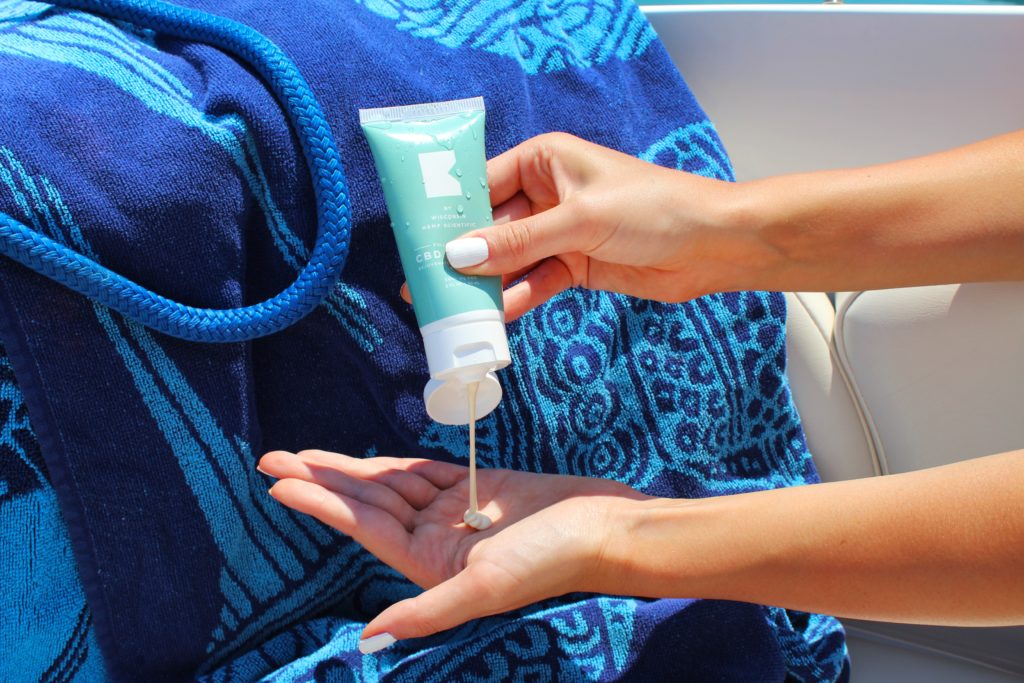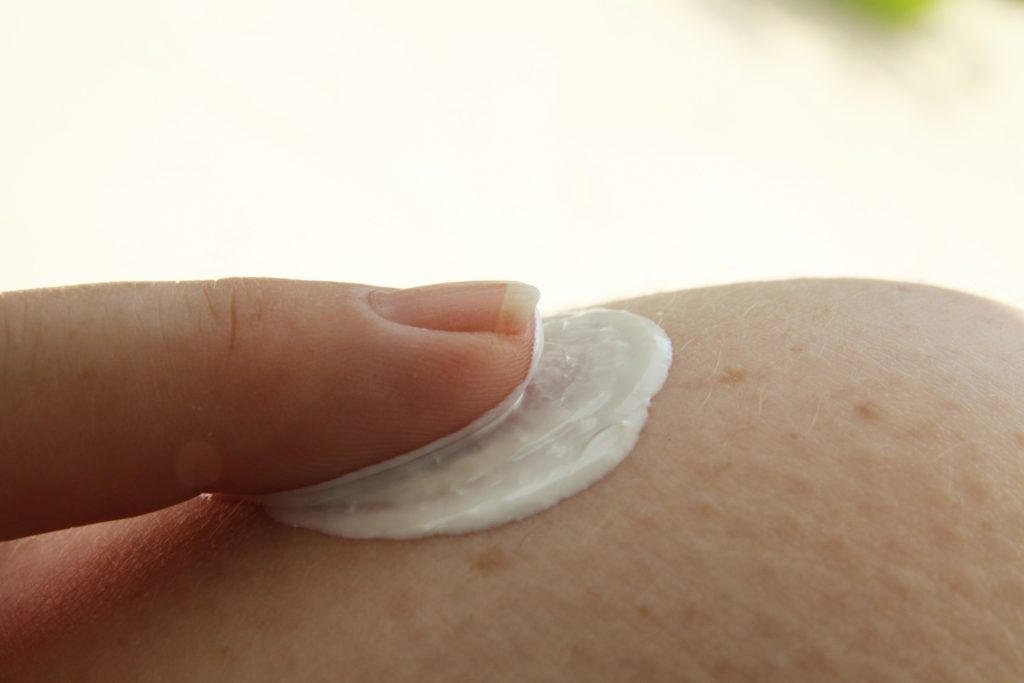Safer Sunscreens

Now with summer in full swing, it’s not unusual to spend extended time outside in the sun. If you have lighter skin or are prone to burns, preventing sunburn is important. Sunburns, in general, increase risks for skin cancers (Dennis 2008). Safely avoiding sunburns is one of the best policies to reduce your risks.
While covering up in the sun can prevent burns, sometimes covering your skin is impractical. Sunscreen can become a necessity in situations with extended exposure to sunlight and bare skin. Unfortunately, some sunscreens have chemicals in them that haven’t been shown to be fully effective or may even cause health problems. Some sunscreens used in large quantities also have environmental concerns. It’s worth reviewing the latest research on the safest ways to avoid sunburns through the summer season.
Types of Sunscreens
There are two main types of sunscreens: chemical and mineral. When effective, sunscreens absorb or scatter the more energetic ultraviolet rays of sunlight that cause burns.
Chemical sunscreens include:
- Avobenzone
- Homosalate
- Octinoxate (also called octyl methoxycinnamate)
- Octisalate
- Octocrylene
- Oxybenzone (also called benzophenone-3)
Mineral sunscreens (or sunblocks) include two different minerals:
- Titanium dioxide
- Zinc oxide
Chemical Sunscreens: Safe and Effective?
In 2019, the U.S. Food and Drug Agency (FDA) proposed new regulations for sunscreens. Under the proposed rule, only titanium dioxide and zinc oxide are currently regarded as safe and effective sunscreens. According to the FDA, all chemical sunscreens require further data to confirm safety and efficacy (FDA 2019). Initial data, and follow-up studies found that chemical sunscreens are absorbed into the body. Blood levels were high enough after topical use to raise concerns for their systemic health effects (Matta 2019, Matta 2020). Due to this, the FDA asked for additional research data to confirm safety and efficacy.
This obviously raises concerns, since a large percentage of sunscreens contain these chemicals. People often prefer chemical sunscreens over mineral sunscreens, since they don’t leave a white residue.
Hormone Disruptions from Chemical Sunscreens
Initial studies on chemical sunscreens that found disruptions in hormonal function started to kindle renewed interest in the safety of sunscreens (Schlumpf 2001). A study in 2004 found that two weeks of daily sunscreen application yielded small, but significant changes in testosterone and estradiol in humans, although the authors dismissed the findings (Janjua 2004). A recent review of the evidence concluded that some of these chemicals interact and disrupt both male and female sex hormones, although more human studies are needed to fully understand the effects (Oral 2020).
Estimating Exposure—Warning: This Involves Some Math—
Most of the research on harm is in animals. Unfortunately, extrapolating from animal research to humans is challenging. Studies in rats found that 1000 mg/kg of one type of sunscreen caused hormonal effects (Schneider 2005). Data on oxybenzone, one of the most well absorbed sunscreens, found that up to 10% of the applied dose was absorbed into the body (Jiang 1999). When you apply sunscreen to your body, most people use 1 mg of sunscreen per square centimeter. The surface area of the whole body on average is about 17,000 square centimeters. For everyday use, not on the beach, someone would likely apply sunscreen to 20% of the body’s surface area. This would be an average daily application of about 3.5 grams of sunscreen.
Let’s assume approximately 10% of the sunscreen is actual active chemical sunscreen. That means 350 mg of the active chemical is applied with 35 mg (10%) absorbed. To reach that 1000 mg/kg threshold shown to cause problems in the rat study previously mentioned, an average 60 kg adult would have to use that sunscreen daily for four and a half years. However, a good percentage of the absorbed sunscreen is also eliminated through the kidneys making it harder to reach the threshold that causes problems. Based on the above rough calculations, chemical sunscreens sound relatively safe.
Toxicities of Chemical Sunscreens Appear Additive
Complicating matters, chemical sunscreens have also been shown to have additive effects. In other words, combinations of these chemicals can act together in concert to have negative effects greater than the presence of just the individual chemicals (Heneweer 2005). This likely lowers the threshold significantly for where negative health effects begin. While the research is concerning, the obvious complexity of studying the effects of multiple chemicals is difficult. And with the current data, it’s hard to know exactly where the threshold for harm may be. Longer human application studies would help identify actual problems. Unfortunately, the likelihood of anyone paying for long-term human studies is probably very low.
When you look at the research in total, it’s easy to see why some groups are dismissive, when others raise significant concerns. You can argue either point, since understanding the complexity of chronic toxicity due to low level exposure is complicated.
Skin Irritation and Allergy

Several of the chemical sunscreens have also been known to cause skin reactions, including irritation, allergy and photoallergy (allergic responses due to sun exposure) (Heurung 2014). In the absorption study mentioned earlier, 14 of 48, or almost 30% of participants developed a skin rash in response to short-term use of commercial sunscreen products (Matta 2020).
Environmental Damage
The environmental damage from sunscreen also appears to be of some concern. An estimated 6000-14,000 tons of sunscreen are washed off of swimmers and released into the environment every year (Downs 2016). Oxybenzone is known to be toxic to coral. 3.1 mg/L of the chemical combined with 8 hours of sunlight kills half of all exposed larval coral organisms (Downs 2016).
Data is also suggesting that sunscreens present in ocean water could be contributing to coral bleaching events. Exposure to the chemicals makes coral more susceptible to viral infections (Danovaro 2008). The chemicals have also been shown to be damaging to other aquatic organisms and wind up in the aquatic (and eventually human) food chain (Sanchez-Quilles 2015)
Mineral Sunscreens
Mineral sunscreens, as either zinc oxide or titanium dioxide come in two forms with either nano-sized particles or standard formulations. The nano-sized formulations were introduced since the smaller particle size reduces the white residue with the application of these products.
Likely, the safest sunscreens are the old mineral sunscreens without nanoparticles. When particles are made exceptionally small, they often have increased reactivity and additional or enhanced biological effects (Jeevanandam 2018). While the majority of the research shows that nanoparticles from sunscreen aren’t absorbed through the skin (Zvyagin 2008, Mohammed 2019, Xie 2015), there are some studies that document small amounts of nanoparticles still penetrating, albeit in very small amounts (Gulson 2010). It’s also worth noting, if used on the lips, the compounds could still easily be swallowed.
Zinc oxide nanoparticles appear to be relatively non-toxic to human cells (Reddy 2007, Yan 2011). However, animal studies have shown significant toxicities through inhalation (Liu 2016). Oral toxicity can also be induced, but with very large doses that are above the safe dose for zinc in general (Liu 2016). Conversely, lower doses in some animal models have sometimes shown beneficial effects (Swain 2016).
Titanium dioxide nanoparticles, likely due to the fact that they aren’t a nutrient, appear to have somewhat greater toxic potential, although again, studies vary (Ali 2019, Talamini 2019). Human exposure levels to titanium dioxide nanoparticles are already getting close to the level that may damage organs, likely from their approved use in food and medications (Brand 2020).
Like their chemical sunscreen cousins, concerns for the environmental effects of nanoparticles have also been found based on their formulation: nanoparticles can be toxic to aquatic organisms (Miller 2012, Corinaldesi 2018).
Conclusions
All in all, the safest sunscreens are likely the old formulations using non-nanoparticle zinc oxide and titanium dioxide. Nanoparticle formulations using only zinc oxide are also likely relatively safe for human use. While the white coloration of the old products makes them less appealing, they have less potential for harm to human health or the environment.
To evaluate a product, you need to find the list of ingredients. It’s common for sunscreens to use multiple chemicals, so you have to read carefully to know what is all included.



